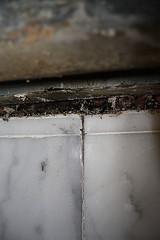 Drywall or wall board, is made of fireproof material crumbly, which predominates in the plaster. This paper is wrapped in a coating, rather tightly, and is easily cut, trimmed and mounted. Drywall can be used to cover conventional bare walls or planks and plaster walls. Because of its unique design, the drywall can be cut, saw, drill, bend, hammer, glue, screw, etc. Standard drywall comes in different thicknesses – a quarter of an inch and three eighths of an inch, half inch and five eighths of an inch.
Drywall or wall board, is made of fireproof material crumbly, which predominates in the plaster. This paper is wrapped in a coating, rather tightly, and is easily cut, trimmed and mounted. Drywall can be used to cover conventional bare walls or planks and plaster walls. Because of its unique design, the drywall can be cut, saw, drill, bend, hammer, glue, screw, etc. Standard drywall comes in different thicknesses – a quarter of an inch and three eighths of an inch, half inch and five eighths of an inch.
Drywall is easy to use, since it is light and easy to install. In general, drywall installation quite an exciting process. Plate drywall stiffer than the more subtle and are used when you want a more serious edge stiffness. The most commonly used drywall is 3 / 8 inch and 5 / 8 in. thick. Check local codes for specific to your needs.
The standard panel is 4 x 8 feet, although 10 'and 12' panels are also available. Moisture-resistant drywall called Grinrok or Greenboard and specially processed to use in bathrooms and? other wet areas. Long tapered edges of the panels to compensate for the thickness and better interface for finishing seams. Plasterboard panels have one rough and one smooth side. It smooth gray surface should be facing outward. In addition to the fact that the installation is quite easy to do drywall, drywall and still relatively inexpensive material. Can be quite difficult for beginners to bring designed to smooth the surface. Simply, if this is your first experience on installation – try to start your practice finishing in a closet or another area of low visibility. When you type experience, all will turn out better. As just installed drywall in place, it is possible to paint or wallpaper paste over (unless it is a textured version of the design), making it ideal for new interior design and special effects.
Recent Comments